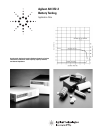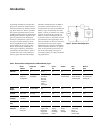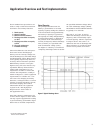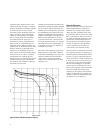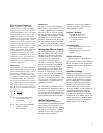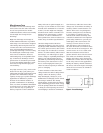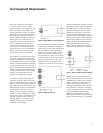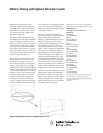
7
From the various tests described
so far, we can see some common
requirements for test equipment. All
the tests require a discharge cycle
using a constant current. A constant
discharge current cannot be attained
with a simple resistor because the
battery voltage changes as current is
drawn from it. An active device is
required, such as an electronic load
with a constant current mode of
operation. Also note that, because
many levels of constant current are
used from test to test, you should be
able to control the electronic load
dynamically as the test demands.
The ability to control the load with a
computer is important because dis-
charge is typically over a long period
of time and, if the test were not auto-
mated, constant attendance would be
an unproductive use of an operator’s
time. Long term tests also bring about
another requirement: reliability. The
electronic load must be very reliable
because, if it should fail, the test
would take a long time to repeat.
In battery or single cell testing the
electronic load only has to function
down to the EODV, not zero volts. See
Figure 5. If the minimum load operat-
ing voltage is above the EODV for the
battery being tested, two alternatives
are available: stack more than one
battery in series until the required
voltage is reached (Figure 6) or place
a DC power supply (of sufficient volt-
age and current) in series with the
battery (Figure 7). A power supply
applied in this way is sometimes
called an “offset supply.”
Figure 5. Single Battery Test Configuration
The first alternative (Figure 6) requires
a method of scanning the voltage of
each battery in the stack so that when
any one battery reaches its EODV,
either the test can be halted or the
battery switched out of the circuit
and replaced by a short circuit. Even
as each battery is switched out of the
circuit, the discharge current will
remain the same if the load has a
constant current mode of operation.
Figure 6. Batteries in Series
The second alternative (Figure 7) shows
that using a power supply may be more
desirable because timed fast charge,
dump-timed charge, and forced dis-
charge tests all require a DC power
source anyway. Additionally, a con-
stant current power supply could then
be used to test ampere-hour efficiency
of secondary batteries. This rating is
simply the ratio of the ampere-hours
delivered during discharge to the
ampere-hours required to restore the
initial state of charge to the battery.
Figure 7. Using an Offset DC Power Supply
Voltage and current must be moni-
tored throughout all the tests because
actual battery voltage varies with the
battery chemistry as well as the dis-
charge rate involved. Therefore, a
voltmeter and ammeter are required.
They should be computer controlled
so that the various tests can be halted
when the EODV is reached. If an
ammeter is unavailable, a current
shunt can be used in conjunction with
either a second voltmeter or a scanner.
Test Equipment Requirements



